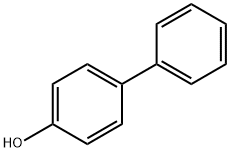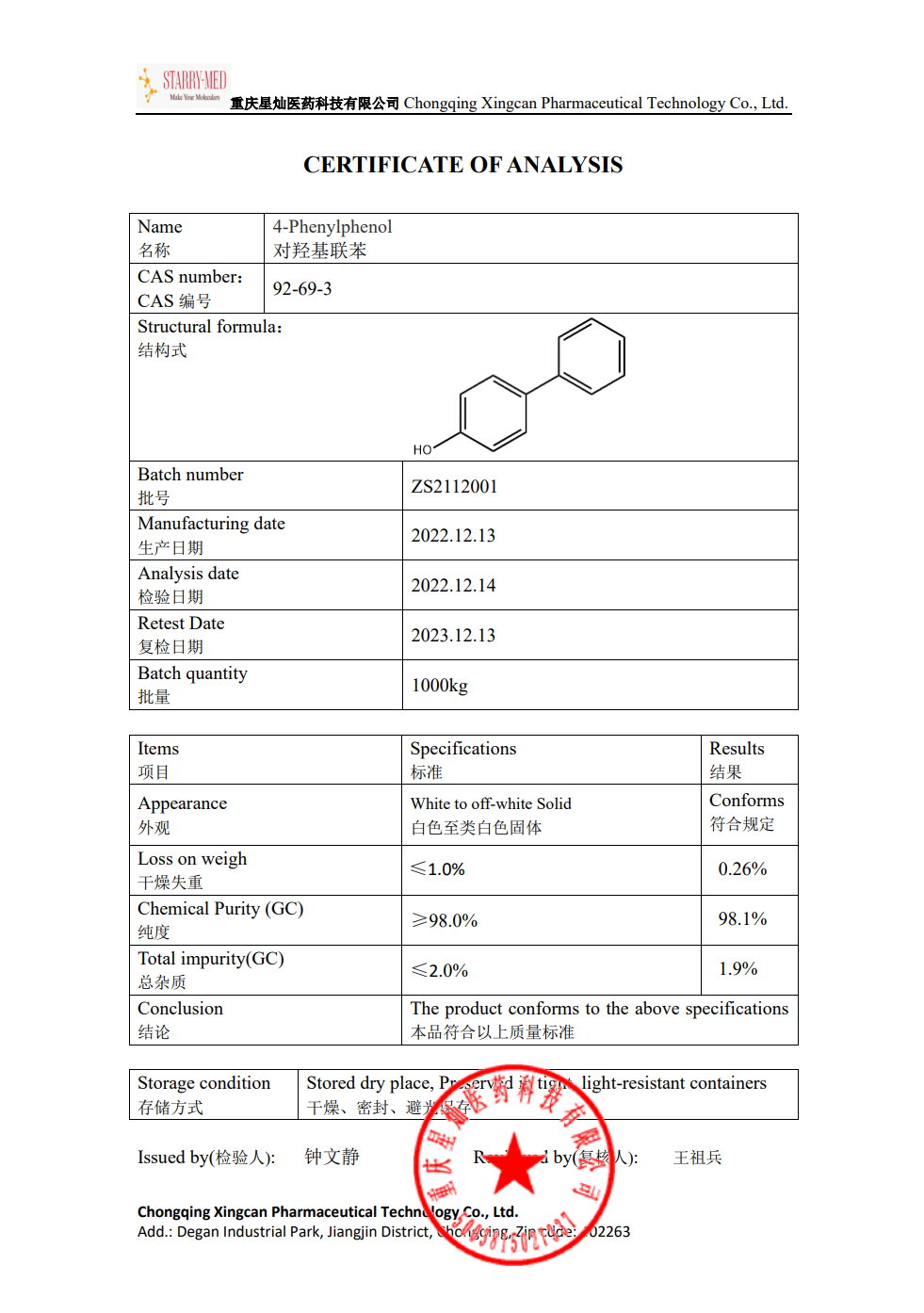
| Melting point | 164-166 °C (lit.) |
| Boiling point | 321 °C (lit.) |
| density | 1.0149 (rough estimate) |
| vapor pressure | 0Pa at 25℃ |
| refractive index | 1.6188 (estimate) |
| Fp | 330 °F |
| storage temp. | Sealed in dry,Room Temperature |
| solubility | methanol: soluble50mg/mL, clear, colorless |
| form | Flakes |
| pka | 9.55(at 25℃) |
| color | White to slightly yellow |
| PH | 7 (0.7g/l, H2O, 20℃) |
| Water Solubility | 0.7 g/L (20 ºC) |
| Merck | 14,7305 |
| BRN | 1907452 |
| Stability: | Stable. Incompatible with strong oxidizing agents, strong bases, halogens. Combustible. |
| LogP | 3.6 at 25℃ |
| CAS DataBase Reference | 92-69-3(CAS DataBase Reference) |
| NIST Chemistry Reference | p-Hydroxybiphenyl(92-69-3) |
| EPA Substance Registry System | 4-Phenylphenol (92-69-3) |
Biphenol, also known as p-phenyl phenol, is the intermediates of the fungicide bitertanol.It is used in the synthesis of oil-soluble resin and emulsifier; used as a component of corrosion-resistant paint, printing and dyeing carrier. P-hydroxybiphenyl synthesized red light enhancement and green light enhancement materials are one of the main raw materials for color films and are also used as analytical reagents.
Fluorescence and phosphorescence quantum yields and fluorescence and phosphorescence lifetimes were obtained for 4-phenylphenol adsorbed on filter paper with either NaCl, NaBr, or NaI at 296 and 93 K. The solid-surface fluorescence and phosphorescence quantum yield values and phosphorescence lifetime values were obtained for p-aminobenzoic acid (PABA) and 4-phenylphenol adsorbed on α-cyclodextrin/NaCl mixtures. 4-Phenylphenol is used as an antioxidant and is a potential EDC.


Please leave a message for us or use the following ways to contact us, we will reply to you as soon as possible, and provide you with the most sincere service, thank you.